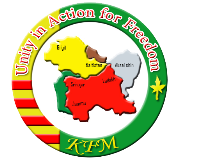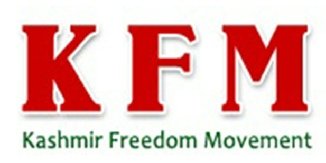


Gilgit Baltistan
The Gilgit Baltistan region (35-
They consist of six administrative districts namely, Astore, Diamir, Skardu, Ghanche, Ghizer and Gilgit.
There are five main languages spoken in the region e.g. Shina, Balti, Burshaski, Khuar, Wakhi.
The population is 100% Muslim the main sects are Shia (Asna Asari), Sunni, Ismaili, Nurbakhsi.
The area is renowned for its multi ethnic heritage, as well as its traditional culture.
Educational indicators in Gilgit Baltistan are among the worst in the state, and are especially low for girls and women. In 1981 the female literacy rate in the region was just 3 percent. The male literacy rate was not much better at 14.7 percent.
Gilgit Baltistan is also known as Dardistan, Blawarstan and " Little Tibet," and of Ladakh as " Great Tibet. Balti call Gilgit " a Tibet," and Dr Leitner says that the Chilasi call themselves Bot or Tibetans.
The ethnological frontier coincides with the Geographical one. In the north is the Baltoro Glacier, the largest out of the Arctic regions 35 miles Long contained between two ridges whose highest peaks to the south are 25,000 and to the north 28,265 ft.
Nowhere in the world there is such a great concentration of high mountains, peaks, glaciers and passes except Jammu Kashmir. Of the 14 over 8000 peaks on earth, 4 occupy an amphitheatre at the head of Baltoro glacier in the Karakoram range.
These are: K-
In addition to that, there are 68 peaks over 7000 m and hundreds, which are over 6000 m. The Gilgit Baltistan region has some of the longest glaciers outside Polar region; Siachen (72 km), Hispar (61 km.), Biafo (60 km.), Baltoro (60 km.), Batura (64 km.), Yenguta (35 km.), Chiantar (34 km.), Trich (29 km.) and Atrak (28 km.).
Political Situation
Prior to 1970, this area was divided into small states, privately run by Mirs and Rajas. People did not have any political or civil rights. Mirdoms and Princely states were abolished in 1970 and the area came under direct administration of Pakistan Federal Government. Ministry of Kashmir Affaires and Northern Areas functionaries moved in and a controlled system of government from Islamabad replaced the traditional power centres. The current administrative set up is being run under direct control of Pakistan federal administered northern areas.
Economic Situation
The economy of the area is based on subsistence level agro-
It is only in this region that the economy is diversifying, and a shift is taking place from production of staple subsistence crops to market oriented cash crops, and -
The cultural heritage found in the Northern Areas consists of many fascinating tangible and intangible cultural assets. These diverse objects of material culture include archaeological sites, monument sites, open public spaces, settlements, historic villages and designed landscapes. This cultural heritage conveys meanings / messages of value.
These heritage resources have both social and economic value. They are major tourist attractions and stimulate business enterprises and entrepreneurship. They are also of great academic interest as the archaeological sites dating back to the 5th millennium BC and the built heritage to around the 10th century are still in almost their original form. They provide visual and recreational enjoyment for residents and visitors alike, and serve a wide range of practical functions within a community.
Historic Places:
There are nine major historic settlements. Five of these are located in the Hunza one in Nagar and three in Baltistan. Skardu is the only city amongst those enlisted, the rest are village settlements, though Karimabad is fast emerging as a township.
Archaeological Sites
The twelve archaeological sites are spread throughout the Northern Areas. The sites are petroglyphs, stone carvings and remains of Buddhist stupas and monasteries. They date from the 5th millennium BC to the 8th century AD. Three sites are located in Diamer district, two in Ghizer, five in Gilgit, and two in Skardu.
Mixed Site
Karimabad, Altit, Ganish, the Sacred Rock of Hunza and the surrounding mountain peaks, (such as Ulter) glaciers, streams -
Historic Monuments
Two historic monuments are located in Baltistan and two in Hunza.
Places of Cultural Heritage:
Five ‘places or Sites in settlements of cultural significance’ of Hunza valley are of great cultural significance for the communities, and one in Nagar.
Two belong to Ganish, one to Karimabad, two to Altit and the one in Nagar is the heart of Thole settlement.
Historic Buildings
Two historic religious buildings
Mamorokutz Mosque,
17th century structure, located in Ganish, Hunza. .
Amburiq Mosque.
Over 600 years old, probably the first mosque built in Baltistan

Subscribe KFM Magazine
Quick Contact
To get KFM monthly magazine (the movement) enter your correct E-
We will never share your email publicly or to any other person.


Copyright ©2022, KFMovement.org. All rights reserved.
Get Social
| Photo Gallery |
| Videos |
| KFM TV |
| Books |
| Gilgit Baltistan |
| Azad Kashmir |
| Indian Occupied Kashmir |
| Aksai Chin |